Linux File Permissions Chmod

A Unix And Linux Permissions Primer Daniel Miessler

Chmod 777 What Does This Mean Learn Linux Permissions Easy Way

Unix Permissions

Your Own Linux Chmod Basics Of Files Directories Permissions And Use Of Chmod

How To Use Chmod Command In Linux Explained With Examples

Chmod Archives Yet Another Linux Blog
If you need to list a file's permissions, use the ls command.

Linux file permissions chmod. The default umask value is subtracted from the overall file/directory default value. To meet our goal, we will run:. After changing a directory's mode to 664 the folder's mode will be.
This ensures that solely approved customers and processes can entry recordsdata and directories. On Unix-like operating systems, a set of flags associated with each file determines who can access that file, and how they can access it. $ chmod u+x hello_script.sh Step 5:.
There are two ways to use the chmod command:. There are two options to choose from, depending on your personal preference:. The chmod command, like other commands, can be executed from the command line or through a script file.
Multi-user systems, such as Linux, require setting up and managing file permissions that ensure only authorized users have access to files they are supposed to. Chmod 744 file name By executing this command, the owner can read, write, and execute the file (rwx). X Permission to execute the file, or, in the case of a directory, search it.
Set the permissions for a file or directory by using the chmod command. The request is filtered by the umask.The name is an abbreviation of change mode. The user file-creation mode mask (umask) is use to determine the file permission for newly created files.
Bash, Shell, Terminal, Command Line cheat sheets linux Ubuntu. Recursive chmod using find, pipemill, and sudo. So if you will use some kind of ftp program to upload files into /opt/lampp/htdocs you need to configure your ftp server to use umask you want.
A sample permission string would be chmod 640 file1, which means that the owner has read and write permissions, the group has read permissions, and all other user have no rights to the file. In linux terminal, to see all the permissions to different files, type ls -l command which lists the files in the working directory in long format. Linux File Permissions, chmod, & umask.
For a directory, whoever has `read'. Each file on the Linux systems bears a set of permissions. It may be used to add or remove permissions symbolically.
You can set the umask values in /etc/profile or in ~/.bashrc. The main difference between access rights for files and directories is that the x permission on a file grants permission to execute it, where on a directory, it grants permission to enter it. To see the permission settings for a file, we can use the.
In Linux, you can easily change the file permissions by right-clicking the file or folder and select “Properties”. To recursively operate on all files and directories under a given directory, use the chmod command with the -R, (--recursive) option. Chmod Modifies File Permissions.
As you may know, the chmod (stands for Change mode) command is used to set or change the access permissions of a file or directory in Unix-like systems. Learn how to change these permissions using the chmod command. In Linux, files and directories are treated similarly.
There's no way to set the permissions for files automatically in only this directory that are created after you set the permissions, but you could change your system-wide default file permissions with by setting umask 022. Running chmod 770 on project-a gives us the permission set we want:. Each row has 2 examples, one for setting that permission for a file, and one for a directory named ‘dir’.
Neither command is difficult to use. To determine the mode (or permission settings) of a particular file, use the command `ls -lg filename'. Users can simply modify file permissions using the chmod (change mode) command.
For example, if you can’t open a script file, you can add permission for the owner to execute with:. To change the file or the directory permissions, you use the chmod (change mode) command. Chmod -R MODE DIRECTORY.
The chmod command changes the access permissions of files and folders. File permissions in Linux file system are managed in three distinct user classes:. How to Set File Permissions Using `chmod' Files.
File permission can be represented in a symbolic or numeric (octal) format. But this raises security concerns as an unsolicited or malign user can corrupt, change or remove crucial data. Let’s say we want to change Linux file permissions from -rwxrw-rw-to -rwx-r–r–.
Myfile.txt – the name of the file/folder. Give read, write and execute permission to the file’s owner, read permissions to the file’s group and no permissions to all other users:. Chmod is a command in Linux and other Unix-like operating systems that allows to ch ange the permissions (or access mod e) of a file or directory.
In Linux, who can do what to a file or directory is controlled through sets of permissions. Changing file permissions is simple with the chmod command:. How to Change File Permissions and Ownership.
9 Comments Originally posted October 13, 14. Understand how Ubuntu / Linux file permissions and special mode bits work. Add a sticky bit to a given directory:.
How To Change File Permissions In Linux Using ‘chmod’ Command. Accessing files in the Linux root file system from Linux. Select the permissions you require below.
Chmod -rwx directoryname to remove permissions. For extra details about file permissions, see “Umask Command in Linux”. In Linux / Unix systems, accessibility to files and directories is determined by file ownership and permissions.
Actually, chmod Command in Linux plays a greater role to keep all the files and directories of the system safe and secure so that no unauthorized person. Chmod – change permissions. Each of the three digits in our chmod statement — 7, 7, 0 — corresponds to Owner, Group, and Others rights.
Simply enter this line:. Change permission on all the files in a directory recursively. Linux is a multi-user system, and entry to the recordsdata is managed by the file permissions, attributes, and possession.
You can also add permissions without specifying a full permission string. After changing a file's mode to 664 the file's mode will be displayed in Unix style file lsting as:. One set for the owner of the file, another set for the members of the file’s group, and a final set for everyone else.
For example, to add execute permissions for the owner of a file you would run:. Check Permissions using GUI Finding the file (directory) permission via the graphical user interface is simple. The general syntax to recursively change the file’s permissions is as follows:.
There are three sets of permissions. However, group and others are only allowed to read (r–). The name speaks for itself.
The second way to execute a bash script is by setting up the executable permissions. User/owner, group and others/public. Just select the appropriate permissions and it will tell you the permissions in both absolute and symbolic mode.
Chmod is a great Linux command for manipulating file and directory permissions. The application shall ensure that the effective user ID of the process matches the owner of the file or the process has appropriate privileges in order to do this. Chmod command in Linux is used to change or assign permissions on files and directories.
Add the file’s owner permissions to the permissions that the members of the file’s group have:. If you want an easy way to know the Linux file permission in numeric or symbolic mode, you can use this chmod calculator. You can configure your file permissions inside of your Windows drives using the mount options in wsl.
Chmod +x filename to allow executable permissions. This is a shortcut, but can save some time. The chmod command can accept numeric integers, such as 0664, which relate to user permissions.
There will be a Permission tab where you can change the file permissions. Chmod +rwx filename to add permissions. The chown command stands for “change owner”, and allows changing the owner of a given file or folder, which can be a user and a group.
These flags are called file permissions or modes, as in "mode of access." The command name chmod stands for "change mode." It restricts the way a file can be accessed. It is important, however, that you understand the only user that can actually modify the permissions or ownership of a file is either the current owner or. There are two ways to use chmod — the symbolic mode and the absolute mode.
The owner of a file can change the permissions for user (u), group (g), or others (o) by adding (+) or subtracting (-) the read, write, and execute permissions. Chown – change ownership. To change file and directory permissions, use the command chmod (change mode).
How to Use chmod Command. Linux File Permission :. After you have assigned the executable permissions to the script, you can run the script without bash command as shown.
Transferring Ownership with chown. Permissions used to be called mode of access and hence chmod was the short form of change the mode of access. There are 3 permission types that are associated with a file.
See this to help create these, if you wish I will cover using chmod. Use sudo, the find command, and a pipemill to chmod as in the following examples. On a Linux system, each file and directory is assigned access rights for the owner of the file, the members of a group of related users, and everybody else.
To start with file permissions, you have to find the current Linux permission settings. Change file permissions in Linux. Using chmod in Symbolic Mode.
Find out how default permissions for new files are configured via a user's umask value. The chmod command allows you to change the permissions of files using symbolic or numeric mode. The permissions control the actions that can be performed on the file or directory.
Chmod Command in Linux Linux File Permission Introduction to Linux File Permission. Chmod is used to make changes:. File Permissions in Linux/Unix with Example Linux is a clone of UNIX, the multi-user operating system which can be accessed by many users simultaneously.
The permission scheme described above also applies to directories. Rwxrwx--- How does 770 correspond to rwxrwx---?. Chmod (this Tutorial's subject) and chown are designed to be able to change the defaults of user access as part of a secure plan by the Administrator, as well as, in the case of chown, modifying downloaded files to make them executable.
In the terminal, the command to use to change file permission is chmod. Linux can also be used in mainframes and servers without any modifications. The commands for modifying file permissions and ownership are:.
The tool will provide you with an octal code that corresponds to these permissions which can then be applied to relevant directories and files with chmod. Mykyta Dolmatov / Getty Images. The chmod() function shall change S_ISUID, S_ISGID, S_ISVTX, and the file permission bits of the file named by the pathname pointed to by the path argument to the corresponding bits in the mode argument.
To make a script executable use +x or u+x, for example :. Adding the numbers in each section results in permissions of 664. In Unix and Unix-like operating systems, chmod is the command and system call which is used to change the access permissions of file system objects (files and directories).It is also used to change special mode flags.
Each class can have read, write and execute permissions. The chmod command stands for “change mode”, and allows changing permissions of files and folders, also known as “modes” in UNIX. Chmod 755 -R /opt/lampp/htdocs will recursively set the permissions.
Types of permissions which we will be changing using chmod command :. As you might remember, the default file permission value is 0644, and the default directory’s is 0755. The chmod command is used to alter the permissions of a file.
View (u)ser, (g)roup and (o)thers permissions for chmod 664 (chmod a+rwx,u-x,g-x,o-wx) or use free online chmod calculator to modify permissions easily. Checking through the graphical interface or using the command. Rights can be assigned to read a file, to write a file, and to execute a file (i.e., run the file as a program).
So if the executable permission of chmod is removed, you can't assign the permissions to any programs, including the chmod command itself. The highly productive Linux system offers various levels of permission to ensure that the user has enough ways to interact with files and directories. If you need to change a file permission, use the chmod command.
The easiest way for a beginner to modify file or directory permissions is to use the symbolic mode. In a previous article, we looked at how to manage file & directory ownership using the chown. Any files created, modified, or accessed in the Linux root file system follow standard Linux conventions, such as applying the umask to a newly created file.
You can use chmod command for changing the permissions on a file in Linux. View (u)ser, (g)roup and (o)thers permissions for chmod 766 (chmod a+rwx,g-x,o-x) or use free online chmod calculator to modify permissions easily. It can be used to control the default file permission for new files.
To assign reasonably secure permissions to files and folders/directories, it's common to give files a permission of 644, and directories a 755 permission, since chmod -R assigns to both. To change directory permissions in Linux, use the following:.
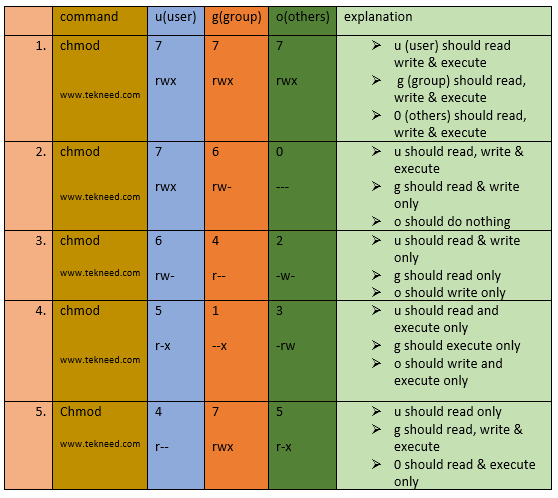
How To Set And Manage File Permission In Linux Part 1

Understanding File Permissions 2buntu

Linux File Permission Javatpoint

How To Change Directory Permissions In Linux Pluralsight

Csc128 Permissions And Links Chmod And Ls
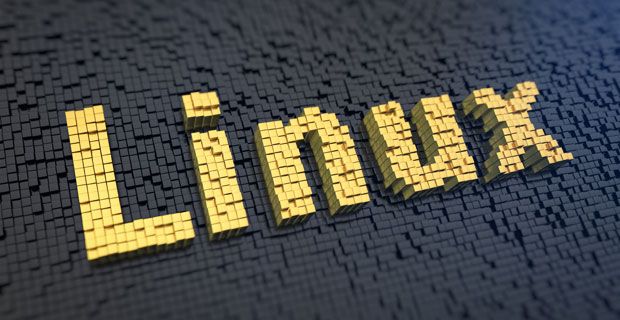
Chmod Command In Linux File Permissions

Linux Chmod Command Linuxfordevices

Chmod All Directories Permissions Only And Omit Files Recursively On Linux Howto Walking In Light With Christ Faith Computing Diary Walking In Light With Christ Faith Computing Diary
.png)
File Permissions In Linux Unix With Example

An Introduction To Linux File Permissions Boolean World

Linux Chapter 3 Permission Management Commands Change File Permissions Chmod 777 Root A Programmer Sought

Chmod Command In Linux File Permissions Designlinux

Understanding File Permissions
/i7guGwCYcn-34e068e148ae4e918b29c86cd2d5740e.png)
Configuring Unix Linux File And Directory Access Rights

Linux Permissions Guide Plex Support

Chmod Chown Wsl Improvements Windows Command Line

Understanding Linux File Permissions With Chmod Umask Chown And Chgrp Liquidon Net

Directory How Can I Change Permissions Of A Folder Including Its Enclosed Files And Subdirectories Ask Ubuntu

How To Use The Chmod Command On Linux
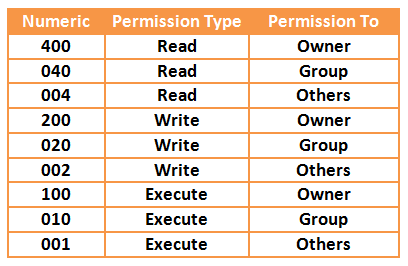
Your Own Linux Chmod Basics Of Files Directories Permissions And Use Of Chmod

Linux File Permissions Tutorial For Beginners
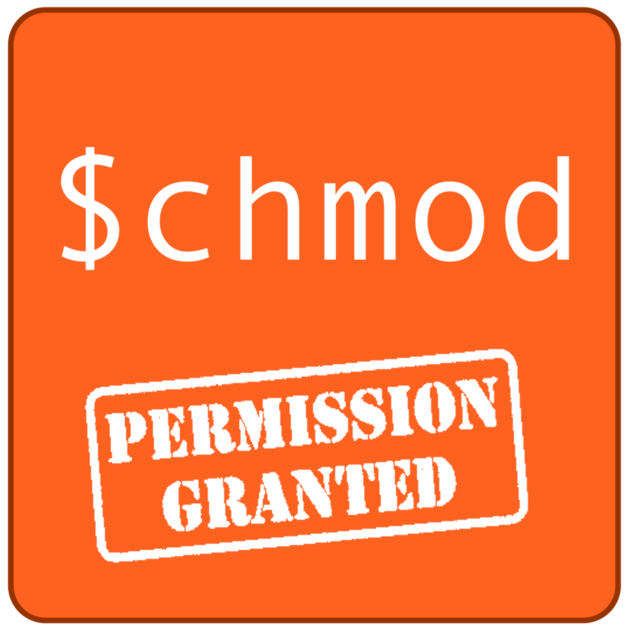
Changing File Permissions In Linux The Chmod Command By Saswat Subhajyoti Mallick Medium

Change File Permissions Easily With Online Chmod Calculator By Chmodcalcu Issuu

Linux File Permissions Complete Guide Devconnected

File Permissions In Linux Unix With Example

Chmod Cheatsheet Linux

How To Deny File Permissions To Everyone Except Yourself In Linux Linuxhostsupport

What Is Chmod How To Use Chmod For Wordpress File Permissions

Linux File Permissions Tutorial How To View And Change Permission

Permissions In Linux Geeksforgeeks

Introduction To Linux File Permissions Attributes Chmod Globo Tech

Linux Permissions An Introduction To Chmod Enable Sysadmin
Linux Chmod Tips

Linux File Permissions Octal Mode

An Introduction To Linux File Permissions Boolean World

Linux File Permissions And Chmod Doug Vitale Tech Blog

08 Unix Linux Shell File Directories Permission Chmod Command Youtube
Q Tbn 3aand9gcrjnvlxj0s Bjlyqdmcffgnaicqwuoecwomv8yezuw Usqp Cau
Video Linux File Permissions Chmod And Chown Linux Org

Permissions In Linux Geeksforgeeks

How Do Linux File Permissions Work

Chmod 777 What Does It Really Mean Make Tech Easier

How To Use The Chmod Command On Linux Basic Linux Permission Linux File Permission Wiz Maverick Benisnous

How To Use The Chmod Command On Linux

What Is Chmod 777 How To Change File Permissions For Linux Tech Ninja Pro
Q Tbn 3aand9gcq6mtqrr2tbkvj8mt7j61itbsugnnfl3ltc9cdgqfgdswx0kkor Usqp Cau

How To Change Directory Permissions In Linux Pluralsight

Understand Linux File Permissions Using Chmod And Chown Commands Programming Tips For Versatile Coders
Q Tbn 3aand9gcr9rnnth31jdnr94db Zmbdt5bh907clokeeor9me5yqbuufaiw Usqp Cau
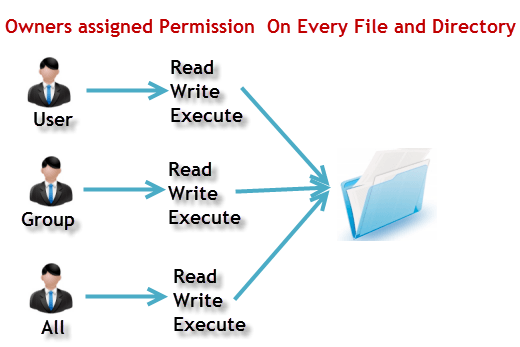
File Permissions In Linux Unix With Example

How Did The Number 777 In Chmod 777 Come Out Under Linux Laptrinhx

Linux Chmod Example Linux Hint
Your Own Linux Chmod Basics Of Files Directories Permissions And Use Of Chmod

Learning The Shell Lesson 9 Permissions

Ppt Agenda Powerpoint Presentation Free Download Id

Understanding Linux Permissions And Chmod Usage
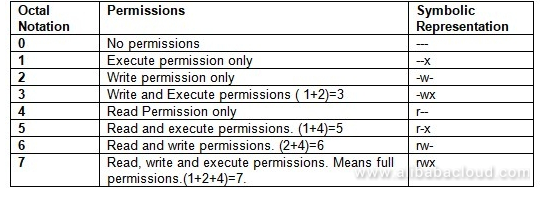
How To Use Linux File Permissions And Ownership On Alibaba Cloud Ecs Dzone Open Source

Linux Commands 5 File Permission Chmod Youtube

How To Change Directory Permissions In Linux Pluralsight

How To Change File Permissions Recursively With Chmod In Linux

Chmod Recursive Change Permissions Recursively On Files Folders

How To Change File Permissions Recursively With Chmod In Linux

9 Quick Chmod Command Examples In Linux

8 Linux Chmod Command Examples To Understand It The Linux Juggernaut

Chmod Command In Linux File Permissions Kirelos Blog
Q Tbn 3aand9gcs J72hjomdluhqe6xjivy M6yrjmkqx9x3z3ps Rpnb8by3w7z Usqp Cau

Modify File Permissions With Chmod Linode

Chmod 777 What Does It Really Mean Make Tech Easier

Linux Terminal File Permissions Chmod Chown And Chgrp Linux Line Tools Thing 1
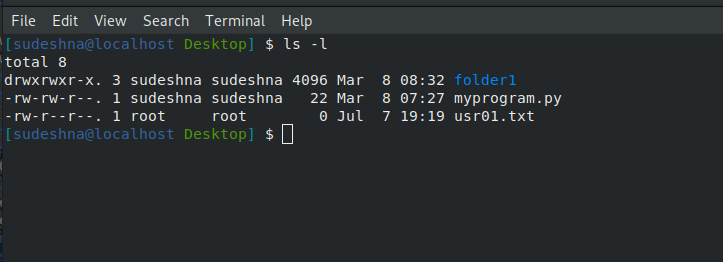
File Permissions In Linux Dzone Open Source

Linux Users And Groups Linode

Linux File Permissions Know The Reason Behind That Chmod 777 By Abhishek Chandra Medium

How To Change Permissions Chmod Of A File Hostgator Support

Linux Permissions Guide Plex Support

Pin By Dr Stefan Gruenwald On Cheatsheets Computer Science Programming Learn Javascript Linux Operating System

Understanding Linux Permissions And Chmod Usage
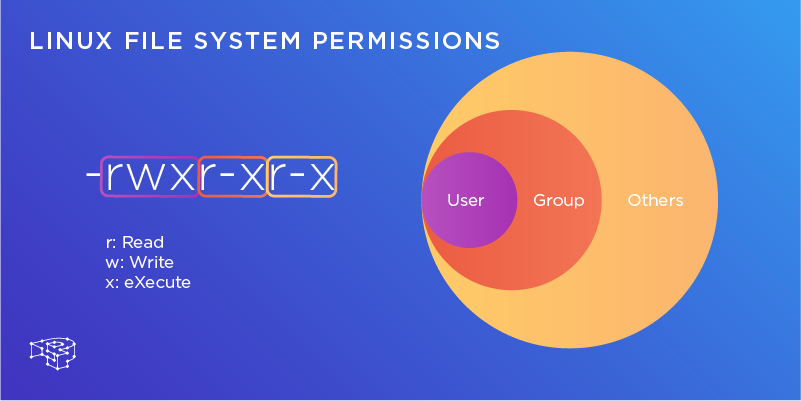
Deciphering Linux File System Permissions Pressidium Managed Wordpress Hosting

How To Copy File Permissions And Ownership To Another File In Linux

Unix Linux Os X File Permissions
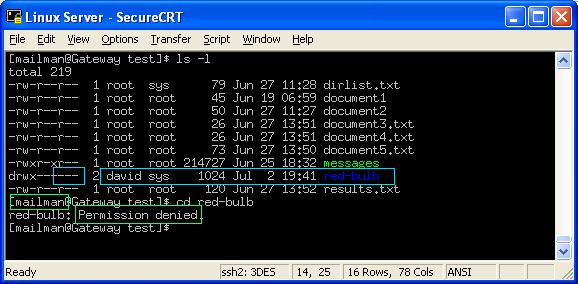
Linux File Folder Permissions
Why Would Using Chmod 777 Recursively From The Root Cause A Linux Box To Not Boot I Could Understand This If I Were Limiting Permissions But Why Would Adding Permissions Cause This

Chmod Command In Linux With Examples Geeksforgeeks

Chmod 777 In Terminal The Command To Make All Changes Affect Every File And Folder Ask Ubuntu

Linux File Permission Change By Chmod Command In Linux Guide For Beginners

Unix File Permissions Computer Science

Understanding Unix Permissions And File Types Unix Linux Stack Exchange

Chmod Wikipedia

Chmod 777 755 655 644 And More Permissions Linux Files Tutorials

Chmod Options Permissions Files Linux Pocket Guide Book

Understanding Basic File Permissions And Ownership In Linux The Geek Diary
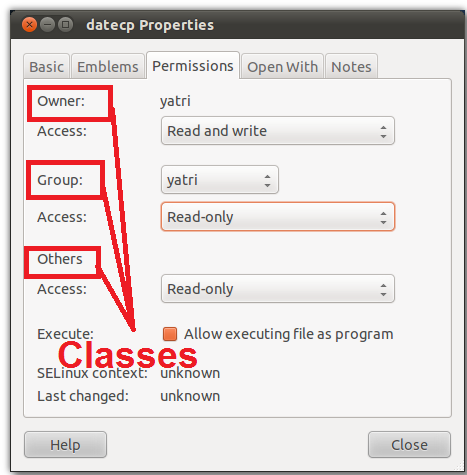
What Is Chmod 777

Linux File Permissions Complete Guide Devconnected

File Security

Ownership And Permissions
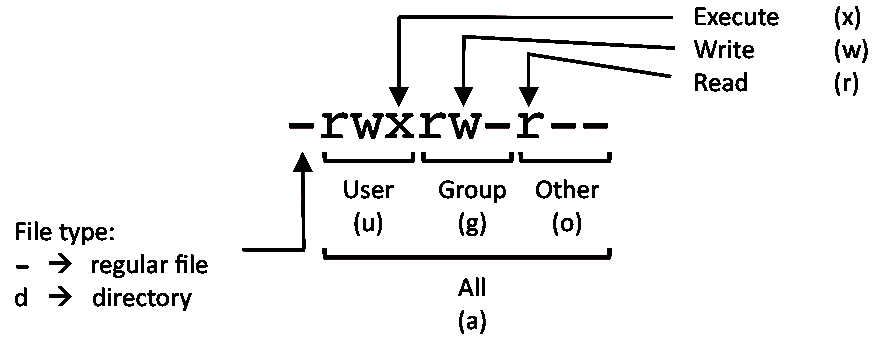
Linux Command Cheat Sheet

Linux File System Nevigation Filing System Reading Writing Linux

Chmod File Permissions In Linux Unix

Linux File Permissions Chmod Umask Tutonics



